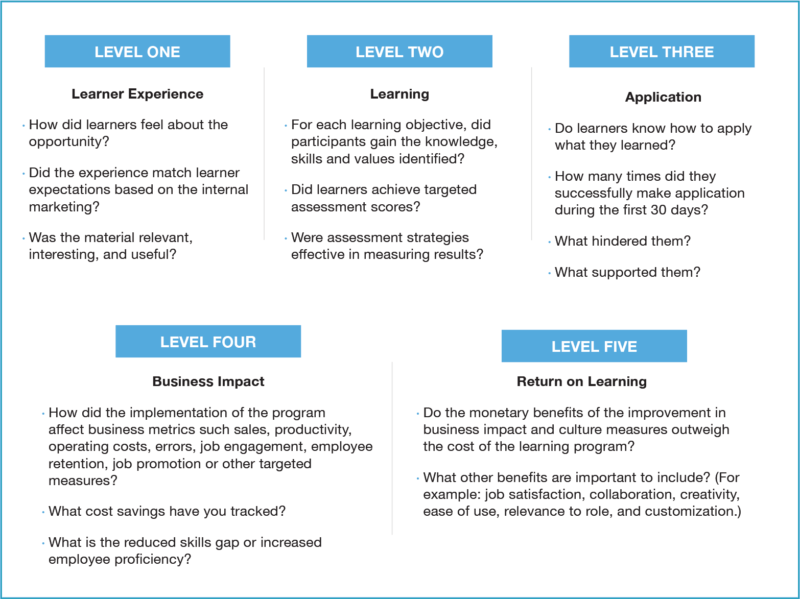Training Needs Analysis Tips To Narrow Your Project Scope
This article is part of a series focused on the Seven Elements of Needs Analysis. The Elements are: Curriculum Mapping, Know/Do/Believe, Defining the Audience, Designing a Learning Brand, Defining the Return on Investment, Building the Team, and Scoping the Project.
What you are about to read is a fable. The company, AshCom, is fictional, but the learning challenges faced by Kathryn, AshCom’s CLO, and her team are real and commonly shared by learning teams in corporations, non-profits, associations, and education. It is our hope that you will be able to connect with the characters, their challenges, and the solutions they discover. Building and following a Needs Analysis system is vital to the success of the learning opportunities we create.

Beyond Project Management
Kathryn stared at her notebook page from the previous learning team meeting. Lost in thought, she retraced the loop that encircled a set of numbers she had written at the top of the page. The topic of conversation for the meeting was focused on the roles and stakeholders as the AshCom learning leadership team completed its planning process and launched into producing the new digital learning assets that would be vital to the success of AshCom.
In the middle of this discussion, Amy said, “Fifty percent more projects usually require one hundred percent more effort in project management.” Kathryn wrote “50%/100%” in her notebook and circled it, her way of reminding herself to think through something later when the conversation was over. She didn’t need the reminder, however. The comment stuck in her head, and she tumbled it around until she could find time to focus on it.
It wasn’t that she thought Amy was wrong. It was more like she wondered if what Amy said had application far beyond project management. What if all their systems were not strong enough to function well in light of the increased workload? What if Amy’s comment was true across all steps in building the learning they needed?
The leadership of AshCom took a big and somewhat risky step with the Globex acquisition. From her interaction with the family who owned the company and its leadership, she knew they were serious people. The purchase of Globex was made in haste. These were serious business people, and they were driven to make AshCom bigger and better.
Kathryn also knew that the leadership of AshCom had put a lot of responsibility in her hands. Bringing together the two companies so that one plus one equaled more than two would require robust and complete learning opportunities. The message was clear to Kathryn: tell us what you need to get this done.
Learning Needs Assessment Progress Check
Kathryn’s learning needs analysis had been the focus of the last several weeks. Her team was asking the right questions and examining the right things. They’d built a curriculum map and developed a Know/Do/Believe set of buckets for the objects for the materials they would create. They had also made a serious effort to understand their learners and taken time to consider how they would brand and market their learner to the company. They’d built a system for defining key metrics and methods for capturing so that they would be able to produce Return on Investment reports. And they’d fleshed out the roles they needed to fill to accomplish their goals as well as identified the key stakeholders and determined how to communicate with them.

Kathryn and her team had come a long way since that day, several weeks earlier, when she first heard confirmation of the Globex acquisition and left the meeting with her head spinning. She was confident that her team had done what it needed to do in the planning stage to achieve their learning and organization goals.
But Amy’s “50%/100%” comment resurfaced in her head. She decided to call in Maggie, her Senior Instructional Designer, who had been with AshCom for more than 20 years. Maggie knew the company as well as anyone, having started in human resources and eventually being the first person pointed specifically at learning.
More than just her institutional knowledge, Kathryn appreciated Maggie’s methodical nature. While Kathryn thought mostly about the overall systems, Maggie’s attention was often on the subsystems. For the past few years, Maggie had nearly perfected their review of current courses and production of digital learning modules. She appreciated new software that enhanced her ability to see where each project was in its development. But she retained a love for paper, something reflected in the appearance of her workstation. Maggie was a details kind of person.
Testing Their Capabilities
When Maggie arrived at Kathryn’s office, Kathryn quickly reviewed all that had been accomplished so far in their learning needs analysis. She also commented on how pleased she was with the learning team’s ability to think through complex issues. Then she got to the issue most on her mind. She simply said, “Fifty percent more projects usually require one hundred percent more effort in project management.”
Maggie didn’t need to be reminded of the source. As a methodological person, Amy’s comment from the last team meeting had also struck a chord with Maggie. “Amy,” she said.
“Yep,” replied Kathryn, “I’ve been thinking a lot about that since we were last all together. It has me thinking. Could it be that we have a great overall plan, but we haven’t examined our production system to see if it is capable of doing what needs to be done?
“I don’t mean our people. What I mean is the steps they will follow to make sure we achieve what we want to achieve. I know our instructional design team works well together, but they will be carrying a much heavier load And we will be adding new instructional designers and new subject matter experts. I think we will also be outsourcing some of this work. All that to say, the number of people involved in building what needs to be built is going to increase. Will we all be on the same page?”
Both Kathryn and Maggie knew that what was being asked of them was substantially more than they had ever produced in a single year. Maggie immediately grasped what Kathryn was driving at because she had some of the same concerns. And she appreciated Kathryn’s ability to examine a large system and ask the right questions.
Lingering Doubts
“The honest answer,” said Maggie, “is I’m not one hundred percent sure. Maybe it is like running a single restaurant where everyone knows each other versus running a chain of restaurants in multiple towns.”
“Exactly my concern, said Kathryn. “We need a recipe. Or maybe better, and I apologize for switching metaphors, maybe what we need is a set of standard operating procedures. People need to know where to start and then the path to follow so we stay on time and on budget.”
“I’ll review our current practices and procedures and get a sense of what might need to change and what might need to be added,” said Maggie. “That’s kind of my thing.” Kathryn smiled. She already knew that.
“We’ve got a few minutes left before I need to get to my budget meeting,” said Kathryn. “Okay with you if we just get some general topics down on the whiteboard so I can see them? I don’t mean we create the system, but let’s think about some of the questions we will want the system to include as if we were starting to build the very first module.”
“Sounds like a plan,” said Maggie.
The Big Questions
For the next few minutes, Kathryn and Maggie took turns writing questions on the whiteboard. It was not an exhaustive list that would come later in a conversation with the entire team but it was a good place to begin.
- What is the budget for this project?
- Do we need 508/ADA Compliance?
- Do we have existing source material for this module?
- Where is the source material stored?
- What is the project start date? What is the completion date?
- Where will the source material be stored when the module is built?
- How often will the team meet? When and where?
- What will be the desired seat time?
- What will be the format at the final delivery of a module?
- How will the module be field-tested before release?
- How will SMEs and stakeholders give feedback to the learning team?
- What media and graphics are already available? Where are they?
- Will the module be compatible with our LMS? Any concerns?
As their time ended, Maggie took a picture of the whiteboard and assured Kathryn she would compare this list to the system they already had in place. Kathryn was confident that Maggie would do what she said and do it well. The “50%/100%” concern hadn’t completely dissipated, but Kathryn was convinced they were on the way to addressing it.
Looking For More Training Needs Analysis Tips In-Action?
To read the rest of the chapters in this series on Needs Analysis and to see Kathryn and her team take on the other Essentials, please download the eBook How To Change The Way You Approach Needs Analysis: A Story Around The 7 Essential Elements. You can also join the webinar to nail your training needs analysis and develop a culture of continuous improvement.


